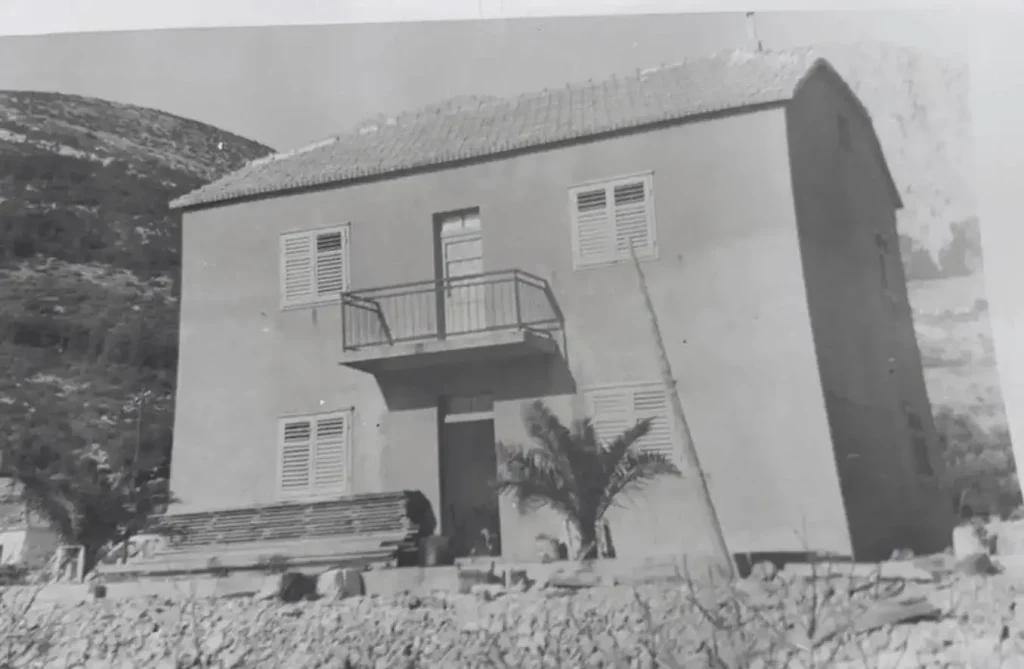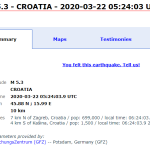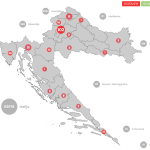My phone started pinging at 06:25, just a minute after it happened.
But it did not wake me.
For I was already chained to my laptop since 05:00, working in bed in Jelsa on the idyllic island of Hvar, as I was every day in those early days of the pandemic, trying to keep my business alive as all clients cancelled around me. March 2020 was already the scariest month of my time in Croatia. And it was about to get worse.
Earthquake in Zagreb!
The earthquake struck at 06:24, and my article was indexed by Google News at 06:39, the first news in English on the web, and the first of many articles we would write that day and in the coming weeks.
(Photo credit – Vlada.hr)
And then the horrible sight from the maternity ward car park in Zagreb, of evacuated mothers and their newborns huddling in the cold – threatened by both corona and aftershocks. There was not much I could do from my Jelsa bed, apart from write, write, write, as well as check on the Zagreb team. Lauren, my editor, was safe if a little traumatised. She wrote a brilliant piece on the first anniversary – Zagreb Earthquake Memories – Deafening Sounds and Cracking Walls.
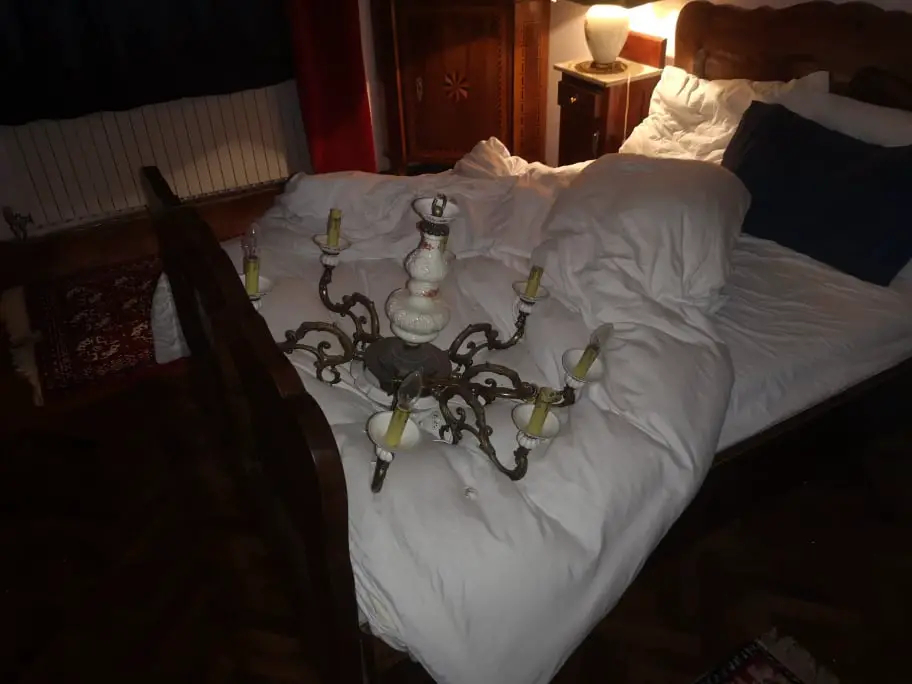
(Photo credit – Forrest J. Stilin)
Our other writer at the time had a much more dramatic wakeup call, with a chandelier landing on his bed and narrowly missing him.
One child died. The government made all the usual promises, and the emergency was acute. And while the main focus was on the city itself, little attention was paid to the village just outside Zagreb, where Karla Lemaic (who quite coincidentally happens to be the producer of my talkshow on 24Sata 3 years later), sent us this video report from the epicentre.
Months passed, with little sign of anything happening regarding the renovation. EU funds were made available, and then – on December 28, 2020 – disaster struck again about 50km from Zagreb in the Petrinja and Sisak area, with another powerful earthquake, whose epicentre was the village of Majske Poljane. I visited the next day to document the story, which you can read in Majske Poljane, Glina, Petrinja: A Foreigner View of Croatia’s Emergency Response.
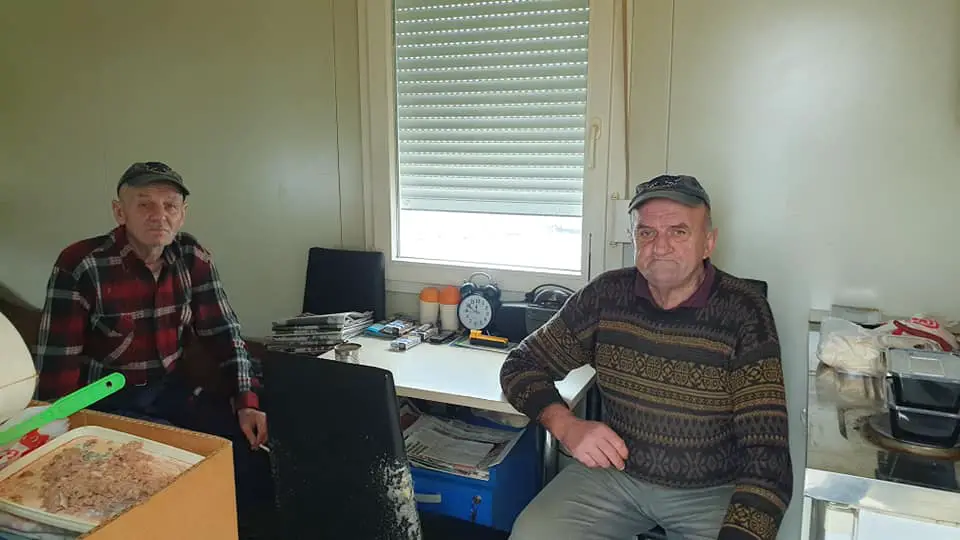
I returned to Majske Poljane one year later, coinciding with a trip there by Croatian President Zoran Milanovic, and saw little change – read more in Petrinja Earthquake 1 Year On: Politics, Pain, Problems, But Progress?
And, as TCN reported on the second anniversary in December 2022, Banovina Earthquake Reconstruction Recap 2 Years Later – Houses Built: 6
Tragic.
Especially when you compare it to past earthquake responses, earthquakes which wrought much more destruction, death and homelessness.
Back in Januay 15, 2022, I posted a new status on Facebook:
This is how good we are.
In 1962, the Makarska earthquake destroyed or badly damaged 12,000 homes. Within 17 months, everything had been rebuilt.
In 1963, the Skopje earthquake killed over 1,000, left 150,000+ homeless, and destroyed or badly damaged 75% of the city. Within 17 months, the city had been redesigned and 14,000 apartments had been built. (link in second comment)
In 2020, the Zagreb and then Petrinja earthquakes badly damaged both cities. 17 months later, little to nothing has been done, and now EU funds earmarked for the earthquake will have to be returned, as the deadline for spending them is looming.
There ain’t no political leadership like Croatian political leadership. Happy Anniversary, Croatia, on the 30th anniversary of International Day of Recognition of Croatia. A golden age when the population was 4.78 million, compared to 3.88 million today.
You can read more in Makarska Earthquake 1962 Full Reconstruction after 17 Months: And Zagreb, Petrinja 2020?
(And for more of an account of the 1962 earthquake and aftermath through the eyes of a child, read An 8-Year-Old’s Memory of the Dalmatian Earthquake of 1962.)
I contacted Karla Lemaic to see how things were going in the epicentre village three years later:
“After 3 years in Markuševec, the epicenter of the earthquake, the most of all people have changed. Many received help and support from the City of Zagreb. Some took advantage of it, and for some it brought even bigger problems. For example, the deadline for submitting invoices in order to justify the use of money from the City for the purpose of renovation is only one year. In one year, you cannot find a construction company that would completely renovate larger projects and issue an invoice. Also, sometimes the renewal of requests and other repairs opens up ‘old holes’, so this donation from the City is not even enough. Be that as it may, most of them solved the aesthetic repairs, so Markuševec looks nicer, but with every new news about the earthquake somewhere in the world, old wounds appear.”
1962, with much worse infrastructure and no EU funds – 12,000 destroyed homes rebuilt in 17 months.
And in Zagreb and Petrinja 2023, more than two years on?
The Croatian people deserve a lot better.
****
You can subscribe to the Paul Bradbury Croatia Expert YouTube channel here.
What is it like to live in Croatia? An expat for 20 years, you can follow my series, 20 Ways Croatia Changed Me in 20 Years, starting at the beginning – Business and Dalmatia.
Follow Paul Bradbury on LinkedIn.
Croatia, a Survival Kit for Foreigners is now available on Amazon in paperback and on Kindle.


